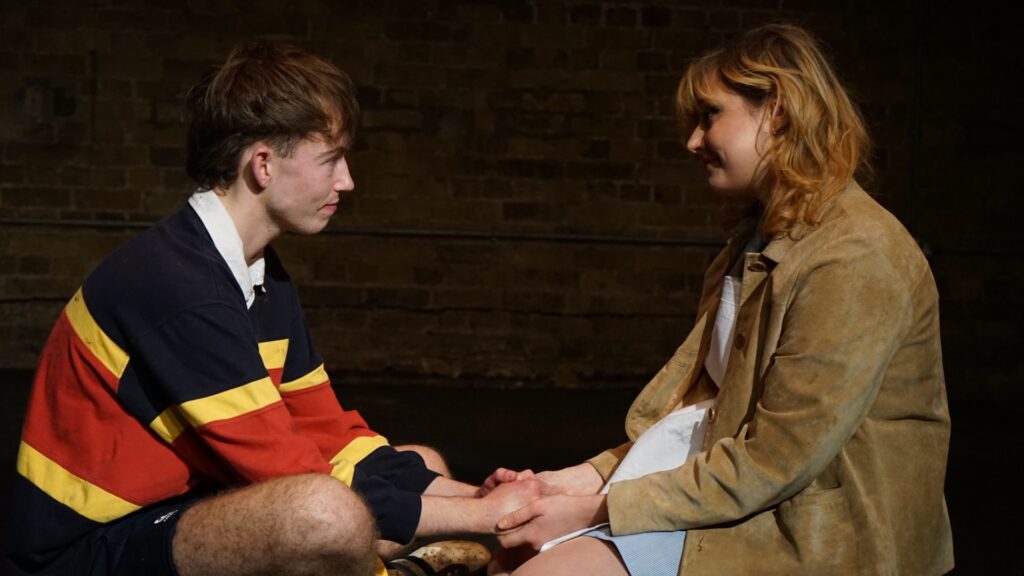Katie Gramich takes a look at the unknown, glamorous Kate Roberts
As every Welsh schoolchild knows, Kate Roberts (1891-1985) was the ‘Queen of Our Literature’. She was indisputably the most important Welsh female novelist and short story writer of the 20th Century, producing a large and various oeuvre extending over a period of more than half a century. In addition to being a creative writer, she was an influential critic, journalist, editor and publisher, not to mention a political activist and one of the earliest members of Plaid Cymru, or the BB (Bloody Blaid) as she affectionately referred to it.
And yet today, a quarter of a century after her death, her work is critically neglected within Wales and she remains little known outside the country. This is despite the fact that much of her fiction has been translated into English. It is shocking to find that while the British Library integrated catalogue lists no fewer than 777 items with ‘Virginia Woolf’ in the title, there are only 19 items on Kate Roberts, four of which are reprints of the same text by Derec Llwyd Morgan. It is high time we invited Kate Roberts down from her inaccessibly respectable enthronement. In particular, we should reconsider the very beginnings of her long literary career.
Katherine Roberts was born on 13 February 1891, the eldest of what would be the four children of Catrin and Owen Roberts, a quarryman and smallholder. She spent most of her childhood living in a cottage called Cae’r Gors, in the village of Rhosgadfan in Caernarfonshire, today an arts and community centre. She had three younger brothers – Richard, Evan, and David. They were brought up close to the land, helping their parents with the smallholding, feeding animals, cleaning their pens, milking cows, gathering heather from the hillsides for fuel, making and carrying hay to feed the animals over the long, severe winters.
The hard work and constant anxiety of the subsistence farmer’s life is continually evoked in Roberts’s early fiction. At the same time she brings home to her readers the close intimacy between the smallholders and their animals. In the 1972 volume Atgofion (Memories), Kate Roberts gives an account of her life to date. She begins her talk with an extraordinarily detailed description of the interior of her childhood home, Cae’r Gors. She remembers, it seems, every single tiny detail, from the red tiles of the kitchen floor, which she would wash every Saturday, to the strange hearthstone made out of an old grave, with the carved words still legible upon it.
That Roberts should begin with an intimate delineation of the domestic space is entirely characteristic of her work. Most of her stories and novels have domestic settings, and it is in these constrained interior spaces that the drama of her plots takes its course. Like Jane Austen’s, Kate Roberts’s fictional world tends to be small, domestic, and dominated by women.
The four little fields around Cae’r Gors formed part of her childhood world. She speaks of them affectionately and intimately, naming them and remembering her childhood game of keeping house on the flat stone in Cae Bach. Further off, the heather-covered slopes of the mountain, Moel Smythaw, was also part of her known map of the world. She and her brothers would gather heather there together, an activity remembered with affection and described for example towards the end of her novel, Traed mewn Cyffion (Feet in Chains).
More ambivalent is her memory of the centrality of the chapel in the family’s life, and yet they spent a large proportion of their time there as children, learning and reciting their Bible verses, attending Sunday School, Seiats, and literary events. ‘Dyna gylch ein bywyd, y tŷ, y capel, y caeau, y ffyrdd, y mynydd’, she concludes (That was the circle of our life: the house, the chapel, the fields, the lanes, the mountain).
She began to move away from this tight circle of family life when she won a scholarship from Rhostryfan Primary School to the County School in Caernarfon in 1904. In line with the educational policies of the time, the lessons she received there were entirely in English. She remembers the sense of disorientation she felt as a thirteen-year-old moving from a virtually monoglot Welsh community to a regime of Englishness. Later in life she would be one of the first campaigners for Welsh-medium education, asserting in 1973 that she considered her greatest achievement in life to be not her literary work but her role in the establishment of the Welsh-medium secondary school Ysgol Twm o’r Nant, in Denbigh.
However, back in her own youth her English-medium education continued when, in 1910 she went to University College, Bangor. There she was one of a small number of female students at University at that time. She was acutely aware of her privilege and of the financial sacrifice her education meant for her parents. She studied Welsh under the charismatic John Morris-Jones and the formidable scholar, Ifor Williams. Again, as in the County School, all the lectures were through the medium of English. The Welsh Society at Bangor was vibrant, and there was much literary and cultural activity – eisteddfodau, debates, and student newspapers. The bright, industrious, and strikingly good-looking young Kate Roberts was at the heart of it all. As she concludes in Atgofion, ‘dyma amser hapusaf fy mywyd’ (this was the happiest time of my life).
She left Bangor in 1913 with a second-class honours degree in Welsh and a teacher’s certificate. Perhaps because she had not gained the First that her lecturers had expected, she took a post as a teacher in Ysgol Elfennol Dolbadarn (a primary school) in Llanberis for a year. In February 1915 she moved to Ystalyfera in the Swansea Valley as a secondary school teacher, taking over the post of a male teacher who had joined up.
The move to ‘y Sowth’ was quite a wrench for the home-loving young woman and at first she found it hard to understand the unfamiliar dialect. But her memoirs show that she soon overcame that obstacle and began to relish the rich cultural life of the area, as well as teaching at a higher level, and the pleasure of having able pupils in her classes such as the boy who would later become the poet, Gwenallt.
It was during her time in Ystalyfera that the first inklings of her future life as a writer first manifested themselves. She threw herself enthusiastically into the literary and dramatic activities of the area, both co-writing and acting in short plays. She formed a close friendship with two other young women, Betty Eynon Davies and Margaret Price. These were the two collaborators with her on the plays which the ‘Red Dragon Society’ performed in the Tawe valley during the war.
The three young women were well-known locally as ‘y tair BA’ (‘the three BAs’) which indicates the unusualness in those days and in that place of university-educated women. Intriguingly, given that Roberts’ subsequent writing has occasionally been criticised for being too unremittingly sad or humourless, this early dramatic work was largely comic. Of course, she and her collaborators were aware that in order to achieve an audience they had to entertain and, perhaps particularly in the sombre time of war, the way to attract an audience was by offering the release and distraction of laughter. Indeed, perhaps the distraction was partly for their own benefit too, since Kate Roberts’ own brothers were by now soldiers in the British Army, their lives in imminent danger.
Roberts’ dramatic work remains largely unknown and out of print, although some of these early collaborative plays are genuinely funny and deserve to be rediscovered. One example is Y Canpunt (The Hundred Pounds), subtitled ‘a comedy from Cwm Tawe’. It was written by Margaret Price, Kate Roberts, and Betty Eynon Davies, who were listed in that order on the title page of the play when it was published in a 6d edition by the Welsh Outlook Press in Newtown in 1923.
The one-act play has five characters: Mrs Davies, a rich widow; Adelina, her daughter; Jim Davies, her nephew; Mari Myfanwy, Jim Davies’s girlfriend; and Sam Price, owner of a coalmine. The play opens unexpectedly, in English, since Adelina is showing off her command of the language, before she is taken to task unceremoniously by her cousin, Jim, who says ‘Siaradwch Gymraeg, ferch’ (Speak Welsh, girl!). The Welsh spoken by the characters is in the dialect of the Swansea Valley and is authentic and fluent. Although one might suspect that Margaret Price, a native of the area, could take credit for that, it is worth recalling that Kate Roberts had an excellent ear for dialect herself, and was able to reproduce south Walian speech convincingly in early stories such as Buddugoliaeth Alaw Jim (Alaw Jim’s Victory).
The opening exchange between Jim and his girlfriend, Mari, focuses on dress (a trope which would become central in many of Roberts’ later short stories). Jim is afraid that Mari is dressed too ‘flightily’ to make a good impression on his aunt, from whom he hopes to extract £100 to enable himself and Mari to get married. His aunt owes Jim the £100, which his deceased uncle promised him on his deathbed. However, instead of giving him the money, she has a tendency to give him presents, such as a watch, a satin handkerchief, and a picture of Queen Victoria!
Mari is contemptuous of these gifts, which she calls “a lot of old rubbish bought in Woolworth’s”. Jim’s plan is to invest the money in a new cinema that his friend from Cwmllynfell is about to open. Mari suspects that the aunt might want Jim to marry her daughter, Adelina, but Jim assures her that their sights are on Sam Price, owner of Gors-y-Bryniau colliery, now that he is beginning to make a large profit from it. The name of the colliery is interesting, since it foreshadows the place name in the title of Roberts’ first book of short stories, O Gors y Bryniau (From the Marsh of the Hills), which would be published two years later. Such a detail offers a glimpse of the collaborative processes of the three women writers. Roberts’ north Wales is transposed onto a south Wales landscape.
Selected Translations of Kate Roberts’ work
| Clancy, Joseph P., The world of Kate Roberts: selected stories 1925-1981 (Philadelphia: Temple University Press, 1991)…
A Summer Day and Other Stories (Cardiff: Penmark Press, 1946) Various translators. Introduction by Storm Jameson. Tea in the Heather, trans. Wyn Griffith (Ruthin: John Jones, 1968). Feet in Chains, trans. Idwal Walters and John Idris Jones (Cardiff: John Jones, 1977). The Living Sleep, trans. Wyn Griffith (Cardiff: John Jones, 1976). The Awakening, trans. Siân James (Bridgend: Seren, 2006). One Bright Morning, trans. Gillian Clarke (Llandysul: Gomer, 2008). The White Lane, trans. Gillian Clarke (Llandysul: Gomer, 2009). |
The play is undeniably amusing. Mari is a feisty and admirable heroine, nicely juxtaposed with the snobbish, Anglicised Adelina and her mother. There is a pointed contrast between Mari’s lively dialect and the aunt’s macaronic, Anglicised Welsh (‘Mae Adelina yn paento yn splendid’/Adelina paints splendidly). Mari manages to extract the £100 from the aunt by flirting outrageously with Sam Price. The aunt finally gives them the £100 in order to get rid of them and clear the path for her daughter to catch the marriageable Mr. Price. The play, as its title indicates, and in spite of its broad comedy, turns on economic realities and class differences, and is in that regard reminiscent of the work of the pioneering Anglo-Welsh dramatist, J. O. Francis. Its comic tone and structure, though, ensure that the characters are not ground down by poverty and hardship but triumph over it through their down-to-earth wit.
Before she became the ‘Queen of Our Literature’, then, Kate Roberts and her female collaborators wrote a number of plays during the First World War which entertained their local community at a time of exceptional anxiety and uncertainty. This was an important apprenticeship for Roberts the budding writer. The discipline of writing vivid dialogue for her dramatic characters undoubtedly helped her in the manipulation of direct speech in her later stories and novels.
At the same time the shared experience of crafting a central conflict as a pivot for the brief structure of a one-act play must have been useful training for the rigorous structural discipline of the short story genre. Above all, this glimpse of the young Kate Roberts, glamorous, confident, and acutely aware of class and sexual politics, makes us rethink radically our inherited image of the elderly Kate Roberts, the ‘stiff, indomitable Queen of our Literature’.





